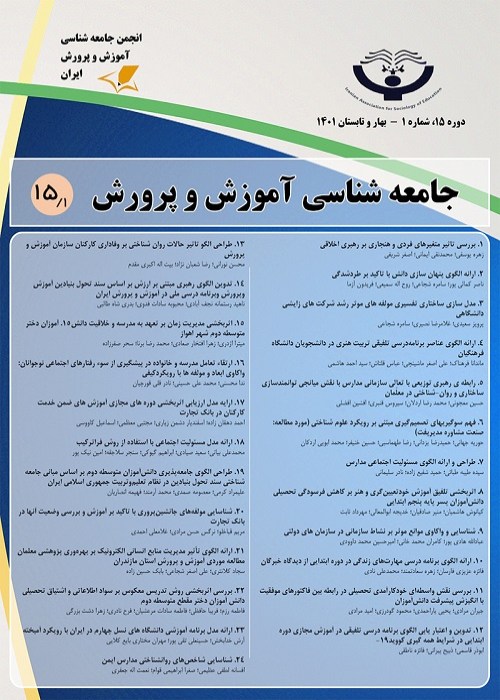Identifying and Prioritizing Individual, Social, Environmental and Cultural Characteristics Affecting the Condition of Children in Orphanages Covered by Tehran's Welfare after the Age of 18
The main purpose of the research is to identify and prioritize individual, social, environmental and cultural characteristics affecting the condition of children in orphanages covered by Tehran's welfare after the age of 18.
The research method is applied in terms of purpose, and mixed (qualitative and quantitative) in terms of data type. The statistical population includes elites with doctorate degrees and university faculty members with at least 5 years of experience in the welfare organization and with research degrees and participation in related seminars. The sample size was 10 experts who were selected with a purposeful method and according to the principle of theoretical saturation. The data collection tool is semi-structured interview and paired comparison questionnaire. Theoretical coding method (open, central and selective) and fuzzy AHP technique were used to analyze the data.
After open and axial coding, it was determined that several components were obtained for individual, social, environmental and cultural characteristics affecting the condition of children in orphanages covered by Tehran's welfare after the age of 18, and these dimensions are: Environment includes supporting measures and environmental substrates. In the individual dimension, it includes components 1- intelligence 2- individual talents 3- physical condition 4- mental condition. In the social dimension, it includes: 1- Social responsibility 2- Religious norms 3- The vicious cycle of socialization. The cultural dimension includes components 1- accepted cultural norms and 2- lack of culture.
Based on the fuzzy AHP technique, the influence of the individual dimension is the first degree of importance, the cultural dimension is the second degree, the environmental dimension is the third degree and the social dimension is the fourth degree.
- حق عضویت دریافتی صرف حمایت از نشریات عضو و نگهداری، تکمیل و توسعه مگیران میشود.
- پرداخت حق اشتراک و دانلود مقالات اجازه بازنشر آن در سایر رسانههای چاپی و دیجیتال را به کاربر نمیدهد.


